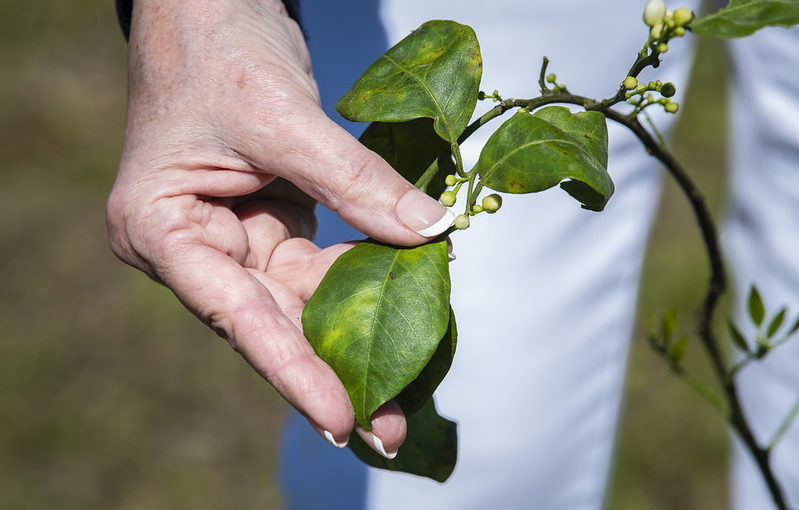July 2022
An Ecology Florida Feature
by Monica Starr
As the end of citrus season approaches here in the state of Florida, the U.S. Department of Agriculture has estimated a record-low harvest. Compared to the previous growing season, the production of oranges, grapefruit and other specialty crops is already down about 22% [1]. This season, it is estimated that Florida growers will fill almost 45 million boxes of produce. Oranges alone make up 90% of these boxes, making these numbers impactful to the citrus industry. This estimate report by the Department of Agriculture is the lowest since the 1939-1940 growing season [1]. According to the federal report made for last season (2020-2021), production totaled almost 58 million boxes which raises question about what happened this past year. Agriculture and specifically citrus production is a very important industry to the state and the a vital part of the state’s economy.
There are numerous environmental, economic and health factors causing these low production numbers for the 2021-2022 growing season. For example, growers have noted that there was a pretty severe winter freeze this year that hindered production. That being said, when looking at these USDA reports over the years, this industry has been on a downward trend for almost two decades. Some of reasons include residential/commercial development, foreign imports and a bacterial disease known as citrus greening.
Citrus greening or Huanglongbing (HLB) is a disease spread by an insect called the Asian citrus psyllid [2]. Psyllids are small, plant-eating insects that get nutrition by sucking on plant juices. They feed on various parts of the plant including the stems and leaves of citrus trees. The citrus trees are then infected with the bacteria that causes citrus greening. This results in the tree not having the ability to take in nourishment, producing fewer and smaller fruits over time and once the tree is infected, there is no cure [2]. Since citrus is grown throughout Florida, this bacteria is negatively impacting farmers all over the state. The fruit being produced can be abnormally small and sour tasting. Other symptoms of citrus greening are yellow spotting and yellow veins on the leaves of these citrus trees.
The state appears willing to help provide funding to address the citrus crisis. Proper funding can allow scientists to better understand this bacteria while looking for effective ways to treat infected citrus trees. The state recently budgeted $6.2 million for the Citrus Health Response Program and $8 million for research programs [1]. But a stunning $17 million was allocated for Florida Department of Citrus marketing programs. [1]. Marketing is not the issue – research is. Rather than plowing $17 million into marketing, additional funding might be deployed to better understand the citrus greening and the impact of the collapsing citrus industry on growers, packers, and distributors. A lack of understanding about citrus greening will continue to create further issues for future growing seasons.
As a farmer, the best thing to do is to fully examine your trees multiple times a year in order to identify this bacterial infection early. The best time to do this is October through March, but symptoms of citrus greening can be present at all other times of the year [3].
Monica Starr is the Public Communications Facilitator and Associate Editor of Ecology Florida News. Monica is a graduate student at the University of South Florida studying Global Sustainability.
[1] https://www.tampabay.com/news/business/2022/06/11/floridas-citrus-production-lowest-in-8-decades/
[2] https://www.floridacitrus.org/newsroom/citrus-411/citrus-greening/what-is-citrus-greening/
[3] https://sfyl.ifas.ufl.edu/archive/hot_topics/agriculture/citrus_greening.shtml


Leave a Reply